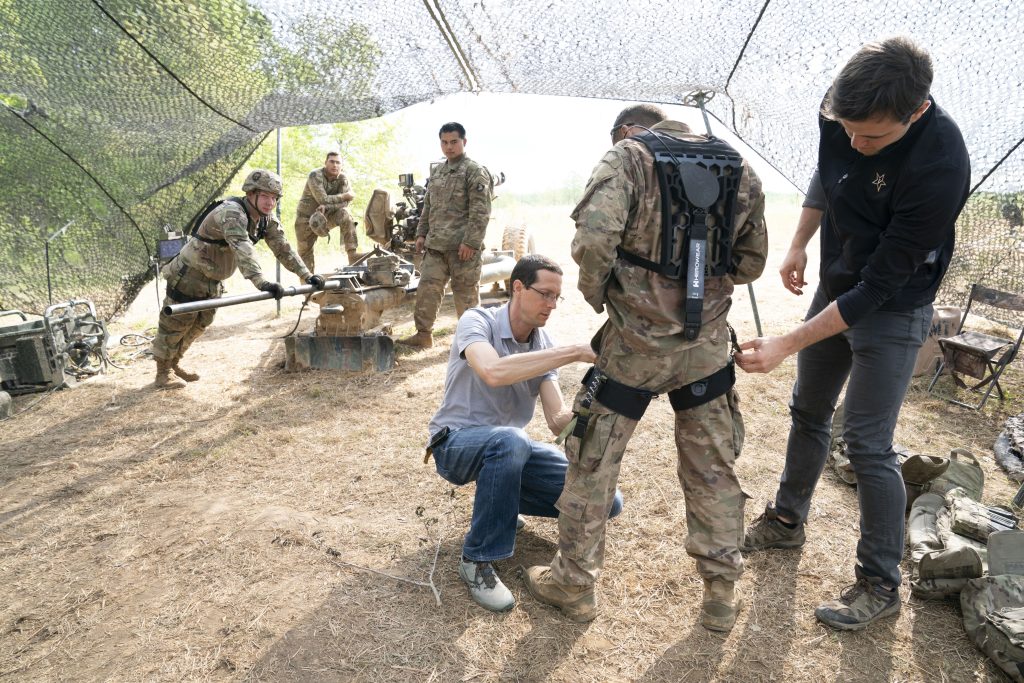Research
Wearable Sensing & Digital Health Tools
We are developing next-generation wearable sensor systems to monitor musculoskeletal loading, injury risk, and post-injury recovery progress during daily life—with a heavy emphasis on algorithm development, system integration, real-world deployment, and delivering actionable analytics. These systems combine wearable sensors, data science, and biomechanics with clinical and translational expertise to unlock new monitoring capabilities for human health and performance.
Our ongoing flagship project uses wearable sensors and remote monitoring to improve recovery after tibia (shinbone) fractures and surgical repair. This ongoing 5-year study—funded by the National Institutes of Health (NIH)—is in collaboration with clinical partners at the University of Kentucky and data scientists at Vanderbilt.
Each year, more than 490,000 Americans fracture their tibia, resulting in over 569,000 hospital stays and 800,000 physician visits. However, patient recovery following a fractured tibia, and the surgical procedure to repair it, often results in an inability to perform pre-injury leisure activities, while 47% of patients are not able to fully return to work a year later, the researchers said.
Rehabilitation exercises are designed to gradually increase bone loading, yet clinicians and patients currently have no way to measure the tibial forces experienced at home—leading to uncertainty and less-than-optimal recovery programs.
We are developing a non-invasive, shoe-integrated wearable sensor system that uses machine learning algorithms and biomechanical modeling to estimate tibial bone forces during daily life. The goal is to enable remote monitoring of musculoskeletal loading, providing clinicians and patients with actionable insights to accelerate recovery and improve long-term outcomes.
This work represents a major step toward data-driven, personalized rehabilitation—a future where wearable and digital health tools empower patients and clinicians alike. It’s also an ambitious and technically challenging project. If you’re curious to learn more, check out our previous publications (Nurse 2024, Elstub 2022a, Elstub 2022b, Matijevich 2020, Matijeivich 2019), or the study overview in the poster below:

Exoskeletons & Wearable Assist Devices
We design and evaluate exoskeletons, exosuits, and other wearable assist devices that enhance human performance, mobility, and safety.
Over 30 million Americans live with physical disabilities or neurological impairments that limit mobility and independence. At the same time, frontline workers and military service members face growing risks of overexertion and musculoskeletal injury. Our research explores how human augmentation technologies can reduce injury risk, improve physical capabilities, and enhance human well-being.
Our lab focuses on the development of innovative new technologies as well as on the integration of this assistive technology with the human body—from understanding biomechanics to optimizing comfort, fit, control, and usability.
After successfully developing and commercializing a back-assist exosuit through our Vanderbilt spin-off company (HeroWear), we have turned our attention to new frontiers in wearable assistive and ergonomic technology in clinical, occupational, and military settings. One promising R&D project is the development of a new kind of wearable weight distribution device to provide Soldiers relief from body armor weight, which commonly leads to back and shoulder injuries.
To learn more, check out this publication or the poster below:
Exploratory Areas
We are continually expanding our research to advance the science of human movement and the technologies that support it. Exploratory areas include:
-
Multi-scale biomechanical modeling to understand how and why humans move the way they do
-
Novel human-device attachment systems to improve comfort and usability for individuals using wearing assist devices such as prostheses, exoskeletons, and exosuits
-
Translational & interdisciplinary R&D to bridge the gap between scientific discovery and real-world benefit
Across all our work, we share a common goal: to translate new insights and inventions into solutions that improve health, mobility, and quality of life. It’s an immersive, challenging, and rewarding experience—one that combines scientific discovery, hands-on engineering, and real-world impact.
Here’s a glimpse inside our world:










